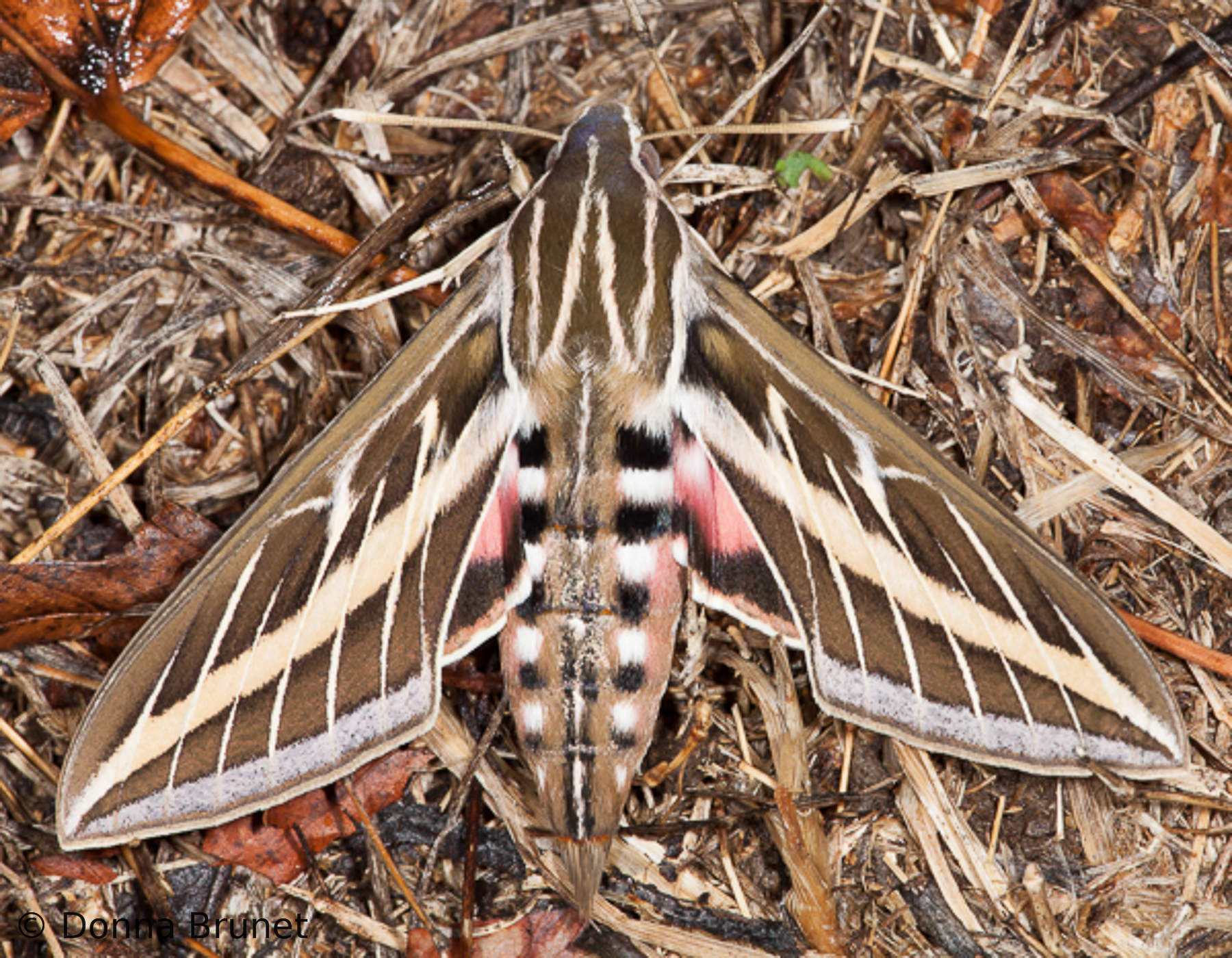Living on the edge: White-line Sphinx Moth

MILAN, Ill. — As the day lengths shorten, our family has been spending the last fading moments of sunlight on our patio, trying desperately to hang on to summer amid the start of the school year. During these last moments of daylight, I am reminded of the beauty found at the edges of our landscape.
As a trained landscape architect, ecologist, and horticulturist, I cannot help but think of the unique beauty that lies in the transitions. More times than not, when we talk about the edges of a landscape, we are talking about the transition from ecosystem to ecosystem, from woodland to prairie, from fields to floodplains, from lowlands to upland bluffs, etc. These are physical changes in the landscape that affect everything from plant and animal communities to soil type and condition, moisture availability, and wind and solar exposure.
Another type of transition that occurs in our landscape but is often overlooked is the transition from day to night and back again. During the early morning hours and late evening hours our landscape can look different, can feel different, and can be used by creatures unique to these limited hours. Recently our landscape was visited by a creature that reminded me that a lot happens right outside my door even when I’m not there.
White-lined Sphinx Moths (Hyles lineata)
White-lined sphinx moths are a member of the sphinx or hawk moth family (Sphingidae). Their bodies are large and plump in comparison to their wingspan, which requires fast-beating wings to maintain flight. This produces the ability to fly fast or hover in place, like that of a hummingbird. Unlike hummingbirds who have long, thin beaks, white-lined sphinx moths reach nectar reserves using an impressively long tongue known as a proboscis.
During the early fall months in Illinois, white-lined sphinx moths (Hyles lineata) can be numerous and emerge during the last hours of daylight to feed on the nectar of blooming plants.
White-lined sphinx moths are members of the order Lepidoptera with relatives that include more famous members like butterflies. While butterflies feed during the day, moths work the night shift, fulfilling an important ecological role of pollinating night-blooming plants. As nocturnal feeders, moths are often attracted to white or light-colored blossoms that reflect moonlight, making them more visible during nighttime hours. Floral fragrances can also be used by moths to locate blooms in low-light conditions.
Attracting moths to the garden
Like other pollinators, butterflies and moths, face threats including loss of habitat, exposure to pesticides, diseases, and invasive species. Moths are also threatened by light pollution from outdoor lighting, illuminating the landscape all night. To support moths in your landscape, minimize the use of pesticides, provide shelter in the form of leaf litter and small brush piles, and provide food for larval stage and adult moths. Although more research is necessary to better understand which plants are favored by the white-lined sphinx moth, incorporating light-colored blooms and fragrant native forbs in your landscape is sure to support moth populations.
Here are a few plants to consider adding to your landscape that support the White-lined sphinx moths.
- Evening Primrose (Oenothera biennis)
- Fireweed (Chamerion angustifolium)
- White-tufted evening primrose (Oenothera caespitosa)
Miss Clipping Out Stories to Save for Later?
Click the Purchase Story button below to order a print of this story. We will print it for you on matte photo paper to keep forever.

